Birth of a New Sonic Body in Hyderabad, India
As a global research project, the SST blog is very pleased to report on emerging sound systems and other SST around the world. This is especially the case in countries where sound system culture is not yet well established – there are very few operating in India. Monkey Sound System intended to have its birthday session this coming Sunday 9th January, 2022 in Hyderabad, however, due to the Coronavirus pandemic, it has been indefinitely postponed. Nonetheless, this gives us the opportunity to provide a little background on how they have got to this important moment. Roy Dipankar, an ethnographer and filmmaker of Royville Media who wrote this blog has a longstanding working relationship and friendship with Bala Subramanyam of Dakta Dub. This is our first blog on Indian sound systems, a scene that will be fully covered in due course as part of our ongoing research programme.
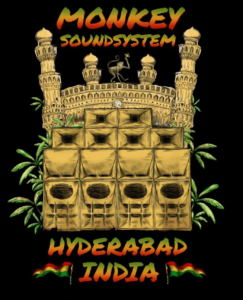
A beaming Balu of Dakta Dub stands in welcome with arms wide open and an electric smile on his face. It has been exactly two years since I was invited to film this journey of creating Monkey Sound System. This is a new pathbreaking sound for the youth of Hyderabad, bringing together syncretic belief systems that lay in sonic and ritualistic dance meditation. Hopes are that Monkey Sound System will become a legend in a city that already resonates with a myriad of sights, sounds, color and a spectrum of socio-cultural segments and everyday life-elements. This is the second phase of the film shoot where I revisit his home and family, where his sound system scoops, bins, drivers, amplifiers all lie in wait neatly and patiently in his garage, to be set up, mounted, fixed and ultimately tuned for the system to come alive.
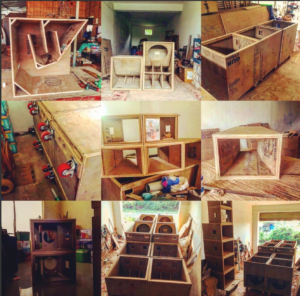
Source: Instagram @monkeysoundsystem
This is the House of Dakta Dub
There is a flurry of activity and buzz at Monkey Radio – his studio and live-in workstation at the roof of Balu’s house. The crew works with perfectly aligned synergy and gusto. More than half of the crew has travelled from different parts of the country and assembled at Monkey Radio with one shared vision and goal. There is serious work to be done in the following days; Balu and his Monkey Radio crew are aware of this fact. Balu (a.k.a. Bala Subramanyam) goes by the moniker Dakta Dub.
Initiated into the world of sound at one of the most archived radio station in the world called Tilos Radio, Budapest, Balu learnt the day-to-day responsibilities of running a community radio station at a grassroots level and above. “It was immediately after coming back to India, I felt the need for a new sound with that extra clean bass”, says Balu, “I intend to promote the culture in this multi-ethic space in India”.
Since 2012, Balu has been running a community radio space called Monkey Radio India, a series of events and dances under a banner floated by him called Bass Sanskriti, a successfully crowdfunded open-to-all-ages-gender and beyond class, caste and religion aimed at children and young adults of his neighborhood called Sound System en masse, and many more community events. He has been an honorary radio host at the state university’s radio station called Bol Hyderabad FM situated at the Department of Communication.
Balu gives a little background on how he got into the technical side of sound systems: ”When we get PA (professional audio) systems for gigs, half of the frequency range is missing. I used to go around the electronics market near my home and explore how they do it and what they have. I wasn’t satisfied with the quality of products they use. I started to play at music festivals in India and thus met Delhi Sultanate from Bass Foundation Roots (BFR) Sound System” .
To put you in the picture Delhi Sultanate’s Bass Foundation Roots is a Indian pioneer sound system. They are based in Delhi some 984 miles north of Hyderabad. That meeting proved critical as Balu realized: “Dakta Dub should have a sound system!”
In November 2016, a sound system conference had been organized with Bass Foundation Roots (BFR) & 10,000 Lions sound systems. It was called All India Dub conference (AIDC). Balu takes up the story: “We, selectors got enough rounds of play on the sound systems at this conference unlike a limited one-hour-schedules at music festivals like Goa Sunsplash. At AIDC, my performance made everyone reason: “Dakta Dub should have a sound system”, says Balu.
“Taus, the sound systems builder who made the BFR sound system had old boxes, which he wanted to give away. I accepted them and slowly purchased 2 scoops first and then he offered kicks; I saved up and purchased them too. At some point on a visit to Goa, I decided to get the boxes home and take things forward from there. My conversations with Taus took a whole new turn altogether. We agreed that this was a completely new project as I was asking too many questions!”
“And there was no stopping from there on. Somewhere in 2018, we started to work on the project and developed things further to what we have now – the Yellow Sound Machine – as Taus fondly calls it!” beams Balu.
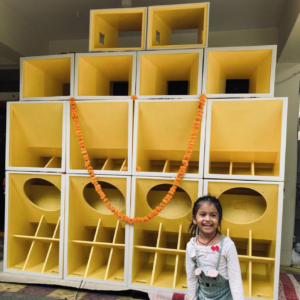
Source: Instagram @monkeysoundsystem
The Yellow Sound Machine
Balu gradually increased his knowledge and expertise in sound system building. “Every sound system is unique in its own way. As a system is defined by what scoops they have and which driver has been used. I have used a more modern scoop unlike the classic roots reggae sound system scoop famously known as Super Scoop. I went for Hog scoop, which is pretty much a modern design by Stipe Ercegovic. The best driver to go with these boxes is the Void 18- 1000, as aptly suggested by Taus and I went for it at once!”
“After this, we had a look at the next set of boxes. Again, at Taus’ suggestion, we decided to have 18-inch driver cabinets for bass cabinets, particularly aimed for my design, instead of 15-inch drivers. I got excited about this idea and said Yes!”
“Next in line were mid boxes. I have been observing BFR and 10,000 Lions boxes, and I was definitely looking at something different to their designs. What I had in mind were MT122 cabinets, which are very hard to make. Beyond some insistence from my end and Taus’ amazing craftsmanship, he figured out a better design and made the MT122s. For the high-frequency boxes, we went for point source co-axial drivers; these are just two drivers, unlike compression and tweeter bullet boxes.
Taus suggested the BMS co-axial drivers being a great fit, and with two of them at the top, it would make sense and pave for a brilliant sound job”, confirms Balu. And that is how Monkey Sound System was designed.
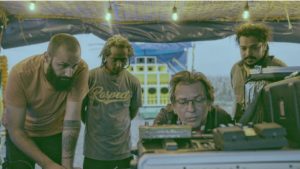
Photo credit: Roy Dipankar
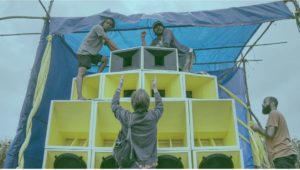
Photo credit: Roy Dipankar
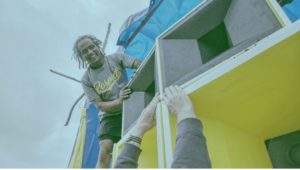
Photo credit: Roy Dipankar
Rain and Thunder, then Moon and Fire
While Balu has been adding to his technical knowledge I’ve been adding to mine in filmmaking. The way of an ethnographic filmmaker towards cinema verité is a tricky terrain. Here’s where you observe subtle nuances and dynamics with little or no intervention in the filming scope. Most of the compositions are planned beforehand but the actual happenings, as is the case of our film have been ‘Jah blessings – things will unfold and happen as they have to happen’. My relationship and experience with my chief cinematographer – Amith Surendran – has been almost telepathic. Little need to be spoken between us. However, we are not a ‘fly on the wall’ las with film verité . As a film crew we aim to get in your veins. Live under your skin without you even feeling it.
Here, you are friends first. And the crew is your family. They travel and cook together. Work, play and dine together. Set up tents together. Talking of tents and the reason they were set up for the first sound test ever of Monkey Sound System is a chapter in its own. There were times in this schedule when filmmaking would take a back seat, as I realized in all readiness, that the sound crew had to foremost ensure and achieve the perfect workings of a sound system, under pressure and several hurdles. Flexibility, patience, and empathy is the key.
The next step to be ready for the Monkey Sound System launch in January was a test session scheduled for 19th November.
The biggest roadblock was the sudden change of weather. We had meticulously planned logistics for November, which generally, is a dry period of time in Hyderabad as far as monsoons are concerned. Low-pressure systems however create major havoc in the Southern archipelago. But this year it rained not stop – for 25 days in the month of November in Tamil Nadu and especially Chennai, where I am based, 390 miles from Hyderabad. So how was I going to get there? After flight cancellations and re-schedules, a forest detour in an unforgiving deluge, and a wobbly boat ride on the way to the airport, I could finally reach Hyderabad.
As Balu notes, “I had planned with much forethought about November and the weather around. I thought rains will subside by October and hopefully, there won’t be another low-pressure situation in the Bay of Bengal. But we were really surprised by heavy rains in Chennai to start with and slowly but surely all of Southern India got affected. Nevertheless, we all had sturdy faith in the existence of a karmic life and went for it.”
“After several last-minute change of plans and venue shifts, we loaded the truck with the sound system and went off to my farm. A patch of land had been cleared off of undergrowth, a quick makeshift cover was built in record time, the truck was brought into the farmland, as the system and control station were set up. We tuned the sound system, sending the frequencies ranging from 30 Hz to 18,000 Hz into various boxes of the sound system, like sub-bass, bass, mids and high-frequency ranges. On the amplifier, frequency crossover points were calibrated and alignments of time travel and delay were adjusted from the sound control station to the boxes. With weather playing truant and whatever limited time we could gather; the Yellow Sound Machine came to life on this auspicious day!”
The 19th November will remain an unforgettable day in our lives. It was a full moon night. And the moon did shine out finally, piercing through the rain clouds like a beacon of great joy and hope.
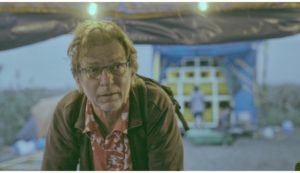
Photo Credit: Roy Dipankar
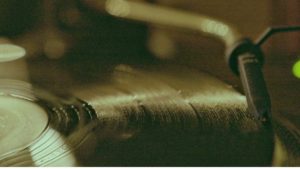
Photo credit: Roy Dipankar
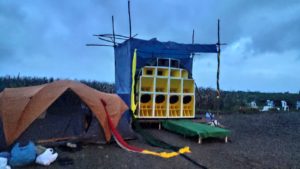
Photo credit: Roy Dipankar
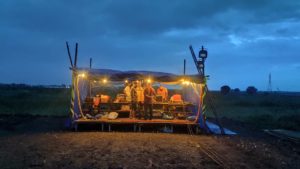
Photo credit: Roy Dipankar
Soundmen and Tunes
The moment when things looked like they were working out fine in terms of tuning, I realized the sheer prowess of a sound system in a flat far-out wide space with no walls and no boundaries for miles the eye could see. At this very momentous glory, I felt that my being was one with the earth (we were barefoot on wet soil) and I could feel the music, word and sound reverberate pleasantly with my temple, heart and gut.
What followed late evening and deep into the night were shout outs to the Monkey crew members, familiar and frequent hoots of “Pull Up, Pull Up!”, amongst light drizzles shimmering in the overhead night lamp, a sweet and brief tribute to Lee Scratch Perry, modest heaps of marigold flowers, delicious creamy tea served by local villagers, and earthy smells of Indian natural incense called dhuni dhoop.
Despite the adverse conditions and with a sizeable crew of sound and film assembled at Balu’s farmland patch – that really looked out of nowhere, in the middle of a vast expanse of cotton crop and corn fields – saw the real bond of resilience, presence of mind and true camaraderie. Taus is the one who has built this sound system. Not a man of many words, however he was visibly quite happy with the output, it was amazing to see him walk around and feel the sound that he created over a couple of years.
Taus shared with me a rare conversation: “In the UK at most days, a sound system would be built by borrowing a scoop from somewhere, or buying off a pre-amp from an auction sale. It’s hardcore, you know. You build your system on the fly. But with Balu’s system, things have been planned and organized clinically. This is a dream set up for many where all the technical components are tidily placed for you to fit them in.”
“So, do you play live bands to a sound system ever?” I ask – Taus. “Of course there are. One band that I know of who regularly played out of a sound system back home, is Siouxsie and the Banshees!”
Another person who came in to support Monkey Sound System’s set up was Yaya Bee. A French soundman who is also in the process of building the Tandav Sound System in Goa. “I requested him to join us so he would help us and also see and know the process of assembling the drivers. “Yaya Bee’s support was incredible. He feels it is a very meditative sound with thumping power. He feels Monkey sound system will stand out amongst other sound systems in India. I hope it too”, confides Balu.
Narinder is an amplifier set-up and tuning professional based out of Delhi, where he maintains and networks with a lot of PA system providers across the country. As Balu explains to me, “On the day of the sound check he had to do his technical work against all odds. Still, he was patient enough to help us to get the system running. He is not completely satisfied though, he has suggested another tuning session, which we are planning to, on or before the public launch.”
“As you know Roy, I have many ideas to materialize. This is the first sound system in Hyderabad. No one knows the power of it. It is going to be new to everyone. And, I am looking at very alternative spaces in running the dances. Looks like it is going to be quite a journey. I am very excited to pitch the new sound system at spaces and see what the future holds”.
—
Soundcheck playlist:
To learn more about us and our projects, follow us on Instagram @daktadub, @monkeysoundsystem, @soundsystemsanskritifilm, @basssanskriti, @roydvanwinkle, @royvillemedia
